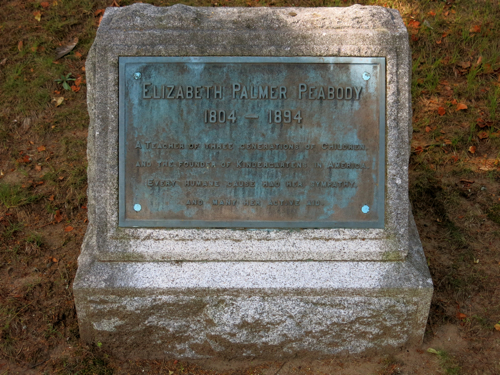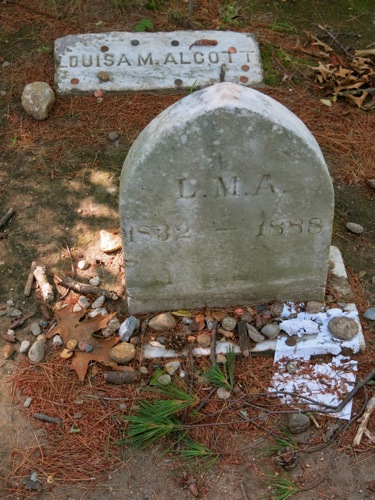Last night, our congregation hosted an online class by John Buehrens on the women of Transcendentalism. John’s stimulating talk prompted me to go read some poetry by Transcendentalist women. I remembered some of the Transcendentalists I knew in Concord, Massachusetts, in the 1990s talked in glowing terms of the Sturgis sisters — Ellen Sturgis Hooper and Caroline Sturgis Dall — so I started with Ellen Sturgis’ poetry. And came across this:
Beauty may be the path to highest good,
And some successfully have it pursued.
Thou, who wouldst follow, be well warned to see
That way prove not a curvèd road to thee.
The straightest path perhaps which may be sought,
Lies through the great highway men [sic] call “I ought.”
This short Transcendentalist poem directly contradicts today’s typical notion that the Transcendentalists were a bunch of wild-eyed hyper-individualistic proto-hippies, bent on “doing their own thing.” Actually, none of them was; a few of them, like Emerson himself, pursued beauty as “the path to the highest good,” but that is quite different than being a hyper-individualist. From what I can tell, most of the nineteenth century Transcendentalists followed the path of duty, rather than beauty; these are the Transcendentalists who fought for abolition of slavery and women’s rights, and fought against poverty; they are better described as disciples of Immanuel Kant and his moral imperatives. I’d prefer to group myself with the Transcendentalists who follow “the great highway [of] ‘I ought’.”
Another of Ellen Sturgis Hooper’s poem struck me:
Hymn of a Spirit Shrouded
O God, who, in thy dear still heaven,
Dost sit, and wait to see
The errors, sufferings, and crimes
Of our humanity,
How deep must be thy causal love!
How whole thy final care!
Since Thou, who rulest over all,
Canst see, and yet canst bear.
Though Ellen was a Unitarian, this strikes me as a Universalist poem, because the phrase “thy final care” implies to me that Ellen Sturgis’s God plans to bring all souls into God’s embrace. Yet Sturgis also confronts head on the hardest thing to understand about universal salvation: there are certain people whom I would not want to extend ultimate salvation — such as the police officer who killed George Floyd, thus betraying both his public trust as a police officer, and his humanity — or the people who commit domestic violence — or the plutocrats who, to defend their ill-gotten wealth, fund and stir up Christian nationalists and white supremacists to destabilize U.S. democracy. Yet Ellen Sturgis’s God has a love for humanity that is so deep, that God can see humanity’s “errors, sufferings, and crimes,” and bear them, and still love. That’s well beyond my limited power, and I suppose that’s why people like me need to follow “the great highway [of] ‘I ought’.”
Ellen Sturgis Hooper died of tuberculosis in 1848, at the age of 36. Her poems were published in Transcendentalist periodicals during her lifetime. After her death, her son Ned printed her poems for private distribution, in an edition of just 8 copies. Several of her poems were also included in hymnals and anthologies.
I found little biographical information about her, aside from mentions of her marriage to physician Robert William Hooper, and her friendship with Margaret Fuller, and her relationship to famous men like William Ellery Channing, Nathaniel Hawthorne, and Henry James, Sr. However, there is a book-length biography of her daughter, Clover Adams: A Gilded and Heartbreaking Life, Natalie Dykstra (Houghton Mifflin Harcourt, 2012) which offers a brief but insightful biography of Ellen (see pp. 3-15).
Ellen’s father was a sea captain and co-owner of a large merchant trading firm; her mother was the daughter of a judge. At age fourteen, Ellen’s beloved older brother died in a tragic accident, an event that completely unhinged her mother, who in her grief was no longer care for Ellen and her other children. Ellen, as the second oldest child, wound up being mother to her younger siblings. At age 25, she was married to Robert Hooper in King’s Chapel, Boston, by Rev. Ephraim Peabody. Peabody said it was “one of the happy marriages,” and Dykstra writes, “Robert’s caution and his more retiring nature might have seemed dull to Caroline Sturgis [Ellen’s sister] and Margaret Fuller but appealing to Ellen, promising ballast after a tumultuous childhood.” She and Robert settled in Boston, living close to her father’s mansion, and close to her sister Anne who had married Robert’s brother, Sam. In 1839, Ellen and her sisters Caroline and Anne were part of the first of Margaret Fuller’s “Conversations.” Ellen lived close to Elizabeth Palmer Peabody’s Transcendentalist bookstore where the “Conversations” were held. Further connections to Transcendentalism came after both of the Hooper families joined James Freeman Clarke’s Church of the Disciples, when it was founded in 1841.
Although many other Transcendentalists became active in various social justice causes, such as abolition, Ellen followed her duty in another direction; according to Dykstra, “Ellen’s husband and three children were the heart of her life.” This makes sense, given Ellen’s experience of her own mother, who had in grief over the death of one child abandoned all her other children. After her third child and favorite child, Clover, was born in 1843, Ellen’s tuberculosis again grew worse. Ellen died in 1848, when Clover was only five years old, and before her death Ellen must have wondered and worried about what would happen to her children after she died. Who would be a mother to them, once she was dead? She found no easy religious or spiritual answer to such a difficult question. Ephraim Peabody, minister of King’s Chapel, who officiated at her funeral, wrote that in her last year of life she had become “almost a mystic.”
I’ll close with one final poem, which is undated, but perhaps came from the end of Ellen’s life:
One about To Die
Oh, melancholy liberty
Of one about to die —
When friends, with a sad smile,
And aching heart the while,
Every caprice allow,
Nor deem it worth while now
To check the restless will
Which death so soon shall still.


